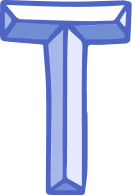Glossary of Terms


Psychological and/or physical dependence on the use of alcohol and other drugs. The term is also used with behavioral disorders such as gambling, tech and internet, gaming and gambling addictions.
the emotional experience that someone feels inside of themselves that can be recognized by others. For example: if you are looking/acting sad (tears, slouched posture, flat tone) you can be recognized by someone else as feeling sad. This is a term used by practitioners when completing a Mental Status Exam during an evaluation.
the inability to enjoy experiences or activities that were once pleasurable. For example, the person doesn’t feel good when they are doing the things that normally make them feel good, like socializing with friends, engaging in hobbies, playing sports, etc.
a medication that is typically used to treat the symptoms of depression or anxiety disorders. These types of medications typically take 6-8 weeks for full effect to be experienced.
medicines that are often used to help treat symptoms of psychosis, schizophrenia and other disorders where individuals experience disorganized thinking, speech and behavior. Sometimes they can also be used to treat mood swings (such as severe depression or mania) or extreme behaviors (such as aggressive outbursts). Formerly called major tranquilizers and later neuroleptics, antipsychotics are commonly divided into two major classes: conventional or typical (first-generation) antipsychotics, which were developed in the 1950s, and the newer atypical (novel or second-generation) antipsychotics. The latter class is reported to have fewer adverse side effects than the former.
an emotion characterized by feelings of tension, worried thoughts, and a variety of physical sensations such as sweating, trembling, dizziness, “butterflies”, or a rapid heartbeat. A person with anxiety will often also think that bad things may happen even when they are not likely to happen. When anxiety interferes with a person’s normal routine or many parts of their life such as, school, work, recreation, friends or family, this can lead to a diagnosis of an anxiety disorder.
a group of psychiatric disorders characterized by feelings of significant and impairing anxiety that is out of proportion to the stressor or with no identifiable cause. Some common types of Anxiety Disorders are: Generalized Anxiety Disorder, Social Anxiety Disorder, Panic Disorders, Separation Anxiety Disorder. Anxiety Disorders can be effectively treated with psychological therapy and/or medication.
a term used in the past to diagnose what is now called ADHD (see Attention Deficit Hyper-Activity Disorder).
a behavioral syndrome that is usually lifelong and associated with a delay in how the brain matures and how it processes information. People with ADHD usually have varying degrees of difficulty paying attention, impulsivity, and being overactive which causes problems at home, in school, and in social situations. There are three kinds of ADHD: Inattentive Type, Hyperactive/Impulsive Type and Combined Type. People with Inattentive Type mostly have problems paying close attention to things or being able to pay attention for long periods of time, so it is harder for them to focus on schoolwork or things that take a lot of concentration for more than a short period of time. People with Hyperactive/Impulsive are usually “on the go” and are often not very good about thinking things through before they act. People with Combined Type have problems with inattention and hyperactivity/impulsivity. ADHD can be treated effectively with medication and behavioral techniques. About 1/3 of young people with ADHD may have a learning disorder, so anyone who is diagnosed with ADHD should have psychological testing done. The symptoms, which impact social, academic, or occupational functioning, typically start to appear before the age of 7 and are observed in more than one setting. It is not uncommon for a youth to be diagnosed much later, or even in adulthood.
now the official term used in DSM–5: Autism, Asperger’s disorder, and childhood disintegrative disorder are no longer considered distinct diagnoses. ASD is a developmental disability caused by differences in the brain that has an onset typically occurring before age 3 that can last throughout a person’s life. Some children show ASD symptoms within the first 12 months, others may not show up until 24 months. Youth may meet typical developmental milestones until 18-24 months and then stop gaining new skills or show regression of skills they had. Initial signs of ASD may be difficulty in soothing, delayed language skills, delayed movement skills, unusual eating and sleeping habits, Gastrointestinal issues, and unusual mood or emotional reactions. ASD is characterized by varying but often marked difficulties in communication and social interaction. A person with ASD can have trouble understanding the feelings of others (empathy) and may not understand many social norms (rules that tell us what is socially acceptable). As children with ASD become adolescents and young adults, they may have difficulties developing and maintaining friendships, communicating with peers and adults, or understanding what behaviors are expected in school or on the job. They may come to the attention of healthcare providers because they also have conditions such as anxiety, depression, or attention-deficit/hyperactivity disorder, which occur more often in people with ASD than in people without ASD.

medications that are used to treat a number of different disorders – most commonly anxiety. They can also be used to treat severe restlessness and agitation.
a mood disorder. People with Bipolar Disorder have experienced at least one full depressive episode and at least one manic episode. Most people with Bipolar Disorder have their first episode before age 25 and it is usually a depression. Bipolar Disorder can be effectively treated with medications and various psychological therapies.
a mood disorder. People with Bipolar Disorder type 2 experience at least one full depressive episode and at least one hypo-manic episode. Hypo-manic episodes are similar to manic episodes but are not as severe. These episodes may last days to months. Bipolar Disorder type 2 can be effectively treated with medications and psychological therapies.
a personality disorder. People with borderline personality disorder have difficulty in regulating their emotions and can experience intense bouts of anger, depression, and anxiety that may last from hours to days or longer. These bouts occur over and over again, often in response to minor life stressors or just on their own. People with BPD have unstable moods, stormy relationships, poor self-image, and self-harming behaviors which can lead to impulsive aggression, self-injury, risk taking and substance abuse.

describes the presence of two disorders that may be associated in a person. For example, someone who has been diagnosed with a Substance Abuse Disorder of Alcohol and Depression. The coexistence of both a mental illness and a substance use disorder is common among people in medication-assisted treatment (MAT). People with mental illness are more likely to experience a substance use disorder than those not affected by a mental illness.
repetitive behaviors used to suppress (push out of thought) obsessive thoughts or to follow strong urges. Some types of compulsions include: counting, checking, tapping, etc. While mild and occasional compulsions are common, severe and persistent compulsions can be part of Obsessive Compulsive Disorder.
a disruptive behavior disorder. The individual with CD shows a persistent pattern of aggressive behaviors lasting over 6 months that are unacceptable to society. Examples include stealing, fighting, starting fires, etc. Young people with CD often get into difficulty with the law.
a strategy to help you deal with difficult situations and lessen unpleasant emotions, thoughts, or behaviors.

a disturbance of cognition where a person has fixed false beliefs that something has occurred or will occur that is not real. A common delusion is the belief that someone is trying to harm them, even though nobody is. Delusions are often associated with psychosis.
a term used to describe a state of low mood or a mental disorder. This can be confusing because people may often feel depressed but will not have a diagnosable condition. The most common type of depression is Major Depressive Disorder (MDD). A person with MDD feels very low/sad/depressed or irritable and also experiences: lack of interest, less pleasure, hopelessness, fatigue, sleep problems, loss of appetite, suicidal thoughts. MDD has a negative impact on a person’s life, home, family, school/work, friends, etc. Depression can also be part of a Bipolar Disorder (see above). MDD can be effectively treated with psychological therapies and/or medications.
a period of depression in MDD or Bipolar Disorder. It includes at least 5 or more of these symptoms being present most of the time, mostly every day for 2 or more weeks: depressed mood, a clear decrease in interest or pleasure in most or all (once enjoyable) activities, a significant weight gain or loss without dieting or loss of appetite, unable to get enough sleep or too much sleep (Insomnia or Hypersomnia), slow movements or purposeless movements from mental tension such as, nervousness or restlessness, which is observable by others (also known as psychomotor agitation or retardation), feeling tired or having less than a normal amount of energy, feeling worthless or a lot of inappropriate guilt, diminished ability to think or concentrate, or indecisiveness (have difficulties making decisions), recurrent (happening again and again) thoughts of death, suicidal ideation (thoughts and/or ideas about death or dying), suicide plan, or suicide attempt.
physical and psychological (emotional and cognitive) growth throughout life.
a description that identifies a medical or mental disorder or illness. In North America a diagnosis is determined by the Diagnostic and Statistical Manual of Mental Disorders (DSM) and by the International Classification of Diseases (ICD). A diagnosis is a medical act provided by doctors, psychologists and others trained in diagnosis.

a mental disorder which is characterized by excessive anxiety and worry about numerous possible events (not any single, specific event) that leads to problems with daily functioning. People with GAD worry all the time and experience many physical symptoms because of the worry (headaches, stomach aches, sore muscles, etc.) GAD can be effectively treated with psychological therapies or medications.

a disturbance of how your brain perceives the world. A person with a hallucination experiences senses that aren’t real (i.e. sound, sight, smell, taste, or touch). For example, a person with psychosis is hallucinating if they hear voices that aren’t occurring in reality.
a type of care that focuses on the whole person, which takes into account their physical and mental state as well as their social background rather than just treating the symptoms of an illness alone.
a milder form of a manic phase. It is usually a part of bipolar disorder. Hypomania can be effectively treated with medication and psychological therapies.

one of the two phases of bipolar disorder (the other is Depression). It is a period of time during which the person with mania experiences very high energy and excessive activity elevated to the point where they may have difficulty controlling themselves or acting in an expected manner. Three or four of the following symptoms must be present for an episode to be considered to be a manic phase: inflated (really high) self-esteem or grandiosity, decreased need for sleep, more talkative than usual or pressure to keep talking, racing thoughts, distractibility, increase in goal-directed activity, excessive involvement in pleasurable activities that have a potential for painful or negative consequences, such as spending sprees or gambling. A manic phase often requires hospitalization for treatment. It can be effectively treated with medications plus other therapies.
a set of related symptoms that have been recognized by the mental health community; includes conditions defined in the DSM-V, ICD-11, and by people with lived experience.
an evaluation of your mental health and well-being through scientifically validated assessment tools.
a mental health class that health professionals use to broadly describe all types of depression and bipolar disorders: these include depression and its subtypes, bipolar disorder and its subtypes, premenstrual dysphoric disorder, and disruptive mood dysregulation disorder. In mood disorders, these feelings are more intense than what a person may normally feel from time to time. It’s also of concern if these feelings continue over time, or interfere with one’s interest in family, friends, community, or work. It’s normal for your mood to change, depending on the situation. However, for a mood disorder diagnosis, symptoms must be present for several weeks or longer.
medicines used to help normalize mood. They are usually used to treat Bipolar Disorder. Some of these are: lithium, valproate, carbamezapine. Some of these medicines are also commonly used in the treatment of epilepsy.

a term used to describe symptoms found in psychosis, often in Schizophrenia. They include losing interest and motivation in life and activities, difficulty talking, inability to show emotions, apathy, lethargy, and withdrawal from social events or settings. Clinicians will also use the term “Positive symptoms” when referring to people experiencing psychosis; they include hallucinations, delusions, loose associations (unclear connections between ideas or disorganized flow of conversation topics), ambivalence (wanting to act one way but act in a way that is opposite to that), or unstable or quickly changing emotions.
a quality or trait of a person who interprets and regards everything in relation to their own self and not to other people. It is associated with an unrealistic and highly inflated self worth.

repetitive, persistent, unwanted thoughts that the person cannot stop, causing significant distress and impair the person’s ability to function. Mild and occasional obsessive thoughts are normal, but when they become severe and persistent they can be part of Obsessive Compulsive Disorder.
a type of mental disorder. People with obsessive compulsive disorder experience persistent unwanted and recurring thoughts (obsessions) and/or persistent and unwanted repetitive behaviors (compulsions). Repetitive behaviors are carried out with the goal of preventing or getting rid of the obsessions or of releasing a strong feeling of inner tension. These behaviors may provide temporary relief for the person while not performing them can cause extreme anxiety. Examples of obsessions include repetitive thoughts of germs or contamination. Examples of compulsions include repetitive or excessive touching, counting, hand washing, and cleaning. OCD can be effectively treated with medications and psychological therapies.
treatment that takes place in an office, hospital, or other clinical setting but does not involve overnight stays.

a Latin abbreviation used for prescriptions. Pro re nata, translates to: when necessary.
a sudden experience of intense fear or psychological and physical discomfort that develops for no apparent reason and that includes physical symptoms such as dizziness, trembling, sweating, difficulty breathing or increased heart rate. Occasional panic attacks are normal. If they become persistent and severe, the person can develop a Panic Disorder.
a mental disorder. A person with panic disorder has panic attacks, expects and fears the attacks and avoids going to places where escape may be difficult if a panic attack happens. Sometimes, people with Panic Disorder can develop Agoraphobia. Panic Disorder can be effectively treated with psychological therapies or medications.
a person who helps a patient (or a patient’s family) with problems and complaints in relation to care or help that they are getting from any agency or institution (hospital, clinic, psychiatric clinic, etc.) Patient advocates can speak on behalf of the patient (or family) and can often be helpful during times of disagreement between the patient (or family) and health care professionals. Many hospitals employ people who act as patient advocates.
the mental process of becoming aware of or recognizing information that comes from the five senses: sight, sound, smell, touch or taste. Proprioception (knowing where your body parts are without looking) is also a type of perception.
a general term for a group of behavioral disorders characterized by lifelong behavior patterns. People with Personality Disorders don’t adjust or function well in changing social environments. Signs of these patterns may include poor judgment, emotional control, impulse control, relationship functioning, etc.
a term used to describe symptoms found in psychosis, often in Schizophrenia. They include hallucinations, delusions, loose associations (unclear connections between ideas or disorganized flow of conversation topics), ambivalence (wanting to act one way but act in a way that is opposite to that), or unstable or quickly changing emotions. Clinicians will also use the term “Negative symptoms” when referring to people experiencing psychosis; these can include losing interest and motivation in life and activities, difficulty talking, inability to show emotions, apathy, lethargy, and withdrawal from social events or settings.
This mental disorder can happen to people who experience a really scary, painful, or horrific event in which they felt scared or helpless and during which they were in danger of death or severe injury. People who develop PTSD will have flashback memories, or nightmares, of the event and will avoid things that remind them of the event. For example, if a person was assaulted in a park they may be too fearful to go to parks and have to find new routes to work. PTSD can be effectively treated with
anything that decreases a person’s chances of getting a disorder or having a negative outcome. Protective factors can be aspects of a person’s health, lifestyle or environment, such as a supporting family or community. Their actual effect in any one person is not easy to predict and it is not clear if they all actually have a direct effect or are just examples taken from healthy people compared to people who are not well.
a licensed medical doctor who has completed additional psychiatric training; can diagnose mental health conditions, prescribe and manage medication, and provide therapy.
the medical specialty focused on understanding, diagnosing and treating mental disorders.
a Ph. D level specialist in psychology licensed to practice professional psychology (e.g. clinical psychology), or qualified to teach psychology as a discipline (academic psychology), or whose scientific specialty is a subfield of psychology (research psychology).
describes the mental process that helps put physical movements into action. For example, a feeling of fatigue may lead to walking very slowly or resting on a couch.
movements that happen because of mental tension. It is often described as a way of relieving mental tension. For example, pacing back and forth and peeling or biting skin around fingers.
slow thoughts as well as movements that are slowed down.
a mental state in which a person has lost the ability to recognize reality. Symptoms can vary from person to person but may include changes in thinking patterns, delusions, hallucinations, changes in mood, or difficulty completing everyday tasks (like bathing or shopping). Mental disorders such as Schizophrenia can include psychosis as a symptom. Psychosis can be effectively treated with medications and other additional treatments.
(also referred to as therapist, clinician, practitioner) a mental health professional trained to help individuals understand and cope with their thoughts, feelings, and behaviors; may assess and/or diagnose mental health conditions. Common licenses are: Licensed marriage and family therapists (LMFTs), Licensed clinical social workers (LCSWs), Licensed professional counselors (LPCs) Psychologists (PhDs or PsyDs), Psychiatrists (MDs or DOs). This is not an exhaustive list: there are substance abuse counselors, faith based counselors, Associates which are working toward licensure, Behavior Analysts who work with Applied Behavior Analysis (ABA) and primarily the ASD population.
Psychotherapy (sometimes called “talk therapy”) is a term for a variety of treatment techniques that aim to help a person identify and change troubling emotions, thoughts, and behavior. Problems helped by psychotherapy include difficulties in coping with daily life; the impact of trauma, medical illness or loss, like the death of a loved one; and specific mental disorders, like depression or anxiety. There are several different types of psychotherapy and some types may work better with certain problems or issues. Psychotherapy may be used in combination with medication or other therapies.

a process of change through which individuals improve their health and wellness, live self-directed lives, and strive to reach their full potential
when a person with a mental disorder who has been in remission or recovery gets sick again or relapses.
when a person’s symptoms decrease and they return to their usual state after having an active phase of a disorder.
anything that increases a person’s chances of getting a disorder (can be aspects of a person’s health, genetics, lifestyle or environment). Remember, risk factors increase a person’s chances of getting a disorder – they do not cause the disorder. And, risk factors can be weak or strong. So having a specific risk factor may or may not be important for the person.

a group of medications used to treat depression. These medications work mainly in the serotonin system of the brain.
any injury that a person inflicts on themselves without the intent to die. Examples of self harming behaviors include: burning or cutting following an emotionally upsetting event, burning or cutting as a method of manipulation or threat, burning or cutting as a way of solving a problem.
a neurotransmitter that helps in regulating many different brain functions, including mood, anxiety and thinking.
a professional who is educated to deal with social, emotional, and environmental problems that may be associated with a disorder or disability. Services provided by social workers may include case management (connecting patients with programs that meet their needs), counseling, human service management, social welfare policy analysis, and policy and practice development.
describes the physical body. For example: sore muscles, fatigue, and headache are all somatic (also known as physical) sensations.
attaching negative qualities to mental disorders (for example, thinking people with a mental disorder are dangerous). Stigma is a strong force and is harmful in that it may keep people from speaking about their disorder, getting help, or receiving treatment. It can create a false image of what mental disorders are and may force people to limit their social interactions, work, education, or to not seek help if they have a mental disorder.
the body’s reaction when forces such as infections or toxins disrupt the body’s normal physiological equilibrium (homeostasis). Psychological stress develops in response to when a person perceives a threat, real or imagined, and determines whether they have the skills or resources to cope with the perceived threat. Stress is necessary for learning how to adapt. Too much stress can lead to a variety of health problems.
a group of medications that improve various aspects of brain function: such as: alertness, concentration, etc. They are often used to treat ADHD.
an unhealthy pattern of drug, alcohol or other chemical use that may lead to relationship, education, work, mental and/or physical problems.
a pattern of actions, physical, and mental symptoms that develop from abuse of a substance (drug). A person who has a substance dependency may develop tolerance to the substance’s effects and may experience withdrawal symptoms when they stop using the substance. They crave the substance and engage in behavior designed to access and use the substance – even if the behavior or substance is harmful to them. A similar term is “Addiction.”
Suicidal ideations (SI), often called suicidal thoughts or ideas, is a broad term used to describe a range of contemplations, wishes, and preoccupations with death and suicide. There are typically two categories of SI: Active- This is when you’re having suicidal thoughts and have some intention to complete suicide. This may include having plans or a method to carry it out. (For example, using a weapon.) The second is Passive SI: This is when you have thoughts of suicide, like “I wish I could go to sleep and not wake up,” but you have no real intention or plans to complete suicide.There are many causes for suicidal thoughts and most often are the result of an individual feeling like they are not able to cope with overwhelming life circumstances. Some people believe that there is no hope for the future and in the middle of an emotional crisis believe that suicide is the only way out. Common reasons for SI include: depression or other mental health conditions, a history of suicide attempts, a family history of suicide, substance misuse, or mental disorders, chronic pain, exposure to family violence, including sexual or physical abuse, direct or indirect exposure to others’ suicidal behavior.
a type of psychological treatment which gradually introduces things that a person fears so that they slowly overcome their fears.

being admitted as a patient to a mental health unit for treatment (usually in a hospital) based on a person’s agreement to be admitted.
a person who stays in a psychiatric facility (usually a hospital) by their own consent or with the consent of the substitute decision maker.

a brain response to a sudden stopping of use of a medication or drug. Symptoms of withdrawal can include: nausea, chills, cramps, diarrhea, hallucinations, etc. Withdrawal often occurs in addiction /substance dependence but most people who experience it are not addicted. Another meaning of withdrawal is the self directed avoidance of social contact. This can be seen in some mental disorders such as: Depression.

DSM V, Diagnostic and statistical manual of mental disorders, Fifth Edition, Text Revision. (2022).
DSM IV-TR, Diagnostic and statistical manual of mental disorders, Fourth Edition, Text Revision. (2000).





